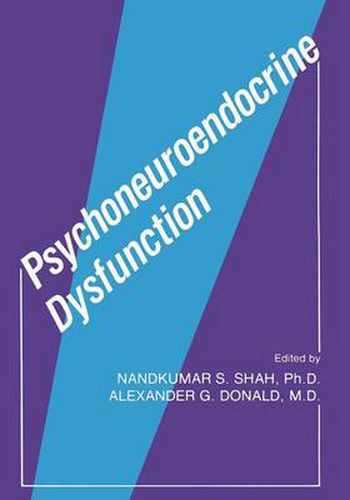Readings Newsletter
Become a Readings Member to make your shopping experience even easier.
Sign in or sign up for free!
You’re not far away from qualifying for FREE standard shipping within Australia
You’ve qualified for FREE standard shipping within Australia
The cart is loading…






This title is printed to order. This book may have been self-published. If so, we cannot guarantee the quality of the content. In the main most books will have gone through the editing process however some may not. We therefore suggest that you be aware of this before ordering this book. If in doubt check either the author or publisher’s details as we are unable to accept any returns unless they are faulty. Please contact us if you have any questions.
There is no area in medicine that has affected biological psychiatry more pro 15 years in en foundly than the developments that have occurred in the last docrinology and more specifically in neuroendocrinology. In the 1960s, the regulation of endocrine function was considered to rest primarily in the feed back system between the pituitary and the secretions of various target organs. In R. H. Williams’ Fourth Edition of the Textbook of Endocrinology published in 1968, the chapter on neuroendocrinology did refer to the median eminence gland with a relatively brief mention of various releasing factors that were the subject of ongoing studies. Only six years later, in the Fifth Edition published in 1974, Seymour Reichlin’s chapter on neuroendocrinology listed nine specific hypothalamic releasing factors of which three had already been isolated and purified and thus were referred to as hormones. Most recently in the current Sixth Edition, published in 1981, the chapter on neuroendocrinology contains a detailed description of the physiology of the various hypothalamic releasing factors and hormones, but also significant emphasis is given to the various neurotransmitters that have been shown to regulate the synthesis and release of these important hypothalamic hormones. In addition, there appeared for the first time in this classic textbook a chapter on psychoendocrinology. One may wonder why there is so much interest not only in endocrinology but more recently in psychology and psychiatry about psychoneuroendocrine It has been known for some time function. Several reasons may be suggested.
$9.00 standard shipping within Australia
FREE standard shipping within Australia for orders over $100.00
Express & International shipping calculated at checkout
This title is printed to order. This book may have been self-published. If so, we cannot guarantee the quality of the content. In the main most books will have gone through the editing process however some may not. We therefore suggest that you be aware of this before ordering this book. If in doubt check either the author or publisher’s details as we are unable to accept any returns unless they are faulty. Please contact us if you have any questions.
There is no area in medicine that has affected biological psychiatry more pro 15 years in en foundly than the developments that have occurred in the last docrinology and more specifically in neuroendocrinology. In the 1960s, the regulation of endocrine function was considered to rest primarily in the feed back system between the pituitary and the secretions of various target organs. In R. H. Williams’ Fourth Edition of the Textbook of Endocrinology published in 1968, the chapter on neuroendocrinology did refer to the median eminence gland with a relatively brief mention of various releasing factors that were the subject of ongoing studies. Only six years later, in the Fifth Edition published in 1974, Seymour Reichlin’s chapter on neuroendocrinology listed nine specific hypothalamic releasing factors of which three had already been isolated and purified and thus were referred to as hormones. Most recently in the current Sixth Edition, published in 1981, the chapter on neuroendocrinology contains a detailed description of the physiology of the various hypothalamic releasing factors and hormones, but also significant emphasis is given to the various neurotransmitters that have been shown to regulate the synthesis and release of these important hypothalamic hormones. In addition, there appeared for the first time in this classic textbook a chapter on psychoendocrinology. One may wonder why there is so much interest not only in endocrinology but more recently in psychology and psychiatry about psychoneuroendocrine It has been known for some time function. Several reasons may be suggested.